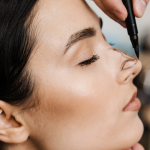Undergoing rhinoplasty is a major step toward enhancing both facial harmony and breathing function. However, achieving the best possible results depends heavily on proper postoperative care. The recovery process requires patience, attention, and consistent care to ensure smooth healing and long-lasting outcomes. Below is a detailed overview of essential postoperative care instructions after rhinoplasty surgery in Riyadh (عملية تجميل الأنف في الرياض).
1. Immediate Postoperative Period (First 48 Hours)
-
Rest and Elevation:
Keep your head elevated, even while sleeping, to minimize swelling and bruising. Use two pillows or sleep in a reclining position for the first week. -
Cold Compress:
Apply cold compresses around (not directly on) the nose and eyes to reduce swelling and discomfort. -
Avoid Touching the Nose:
Do not touch, rub, or press on your nose. Be gentle when washing your face or changing clothes. -
Bleeding and Drainage:
Mild bleeding or pinkish discharge from the nostrils is normal. Use gauze pads as directed by your surgeon, and change them as needed.
2. Medication and Pain Management
-
Pain Relief:
Take prescribed pain medication as directed to manage discomfort. Avoid aspirin or ibuprofen unless approved, as they can increase bleeding. -
Antibiotics:
If prescribed, complete the full course to prevent infection. -
Saline Sprays:
Use saline nasal sprays to keep the inside of your nose moist and promote healing.
3. Hygiene and Cleaning
-
External Cleaning:
Clean the nostrils gently with a cotton swab dipped in hydrogen peroxide or saline, as instructed. -
Avoid Nose Blowing:
Do not blow your nose for at least two weeks after surgery. This can disrupt the healing tissues and cause bleeding. -
Showering:
You may shower but keep the nasal splint and dressings dry unless your doctor advises otherwise.
4. Activity Restrictions
-
Avoid Strenuous Activities:
Refrain from heavy exercise, bending, or lifting for at least two to three weeks. Such activities can raise blood pressure and cause bleeding or swelling. -
No Glasses or Sunglasses:
Avoid wearing glasses directly on the nose until your surgeon gives permission (usually after 4–6 weeks). Use contact lenses if possible. -
Sun Protection:
Protect your nose from direct sunlight, as the skin is very sensitive after surgery and can discolor easily.
5. Diet and Hydration
-
Eat Soft Foods:
Stick to soft foods for the first few days to avoid excessive movement of facial muscles. -
Stay Hydrated:
Drink plenty of water and avoid salty foods to reduce swelling.
6. Emotional and Physical Healing
-
Swelling and Bruising:
Expect swelling and bruising around the eyes and nose for up to two weeks. Full results may take several months to appear. -
Numbness or Stiffness:
Some numbness and stiffness around the nose tip are normal and will gradually fade. -
Follow-Up Appointments:
Attend all scheduled appointments so your surgeon can monitor your healing and remove splints or stitches as needed.
7. When to Contact Your Surgeon
Seek immediate medical attention if you experience:
-
Heavy or continuous bleeding
-
Severe pain not relieved by medication
-
Fever or signs of infection (redness, pus, or swelling)
-
Sudden swelling or difficulty breathing
Conclusion
Proper postoperative care is key to achieving a smooth recovery and the best rhinoplasty results. By following your surgeon’s instructions, maintaining good hygiene, and being patient with the healing process, you’ll help ensure that your new nasal shape settles beautifully and naturally.
